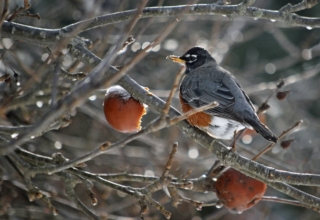
I mention this multi-step process because something comparable occurs in human-shaped institutions. Young, fluid (often family-owned) organizations become increasingly rigid and inflexible as they “cool down” (grow older). While these large institutions are often quite impressive—like a beautiful work of art—they are often not inclined to dance (Kanter, 1989) nor to adjust well to a rugged, dancing landscape (Miller and Page, 2007; Bergquist, Sandstrom and Mura, 2023).
We can purchase an expensive Chihuly sculpture made of finely crafted glass but don’t want other people handling this prized fragile object. We also don’t want innovators to mess around with our long-standing, high-prestige organizations. They are fragile and often only remain unbroken because of their command of the marketplace or their benefiting from government-enforced trade restrictions. Those who lead these large organizations, and those who teach in large, prestigious Business schools about traditional management practices, certainly do not appreciate the critique offered by Nassim Taleb. For these folks, homeostasis is foundational–and the twin management prongs of prediction and control are gospel.
Taleb is getting into trouble with the traditionalists and leaders of large organizations by suggesting that we can identify those institutions that are or will readily be Fragile in our contemporary world. We can also identify those institutions that are likely to be anti-fragile. He based his assessment regarding fragility on the way in which complex systems relate to unanticipated (“Black Swan”) events. To begin with, it is hard to arrive at accurate predictions when faced with complexity (Taleb, 2012. P. 7):
Complex systems are full of interdependencies-hard to detect-and nonlinear responses. “Nonlinear” means that when you double the dose of, say, a medication, or when you double the number of employees in a factory, you don’t get twice the initial effect, but rather a lot more or a lot less. Two weekends in Philadelphia are not twice as pleasant as a single one-I’ve tried. When the response is plotted on a graph, it does not show as a straight line (“linear”), rather as a curve. In such environments, simple causal associations are misplaced; it is hard to see how things work by looking at single parts.
Increasing this predictive challenge is the compounding effect of shifts in complex systems (with many interdependencies). In my book on The Postmodern Organization (Bergquist, 1993), I offered a parallel between this compounding effect (often labeled as “self-organizing criticality”) and the dynamics of an avalanche. Some small (unpredictable) event (such as a gust of wind) or an intentional event (such as a cannon shot) produces movement of a large block of snow. This cascading mass of snow recruits nearby snowpacks—and even recruits nearby boulders and trees. The avalanching system grows in size, power and speed.
Taleb (2012, p. 7) offers this description of what I have identified as the avalanching system:
“Man-made complex systems tend to develop cascades and runaway chains of reactions that decrease, even eliminate, predictability and cause outsized events. So the modern world may be increasing in technological knowledge, but, paradoxically, it is making things a lot more unpredictable. Now for reasons that have to do with the increase of the artificial, the move away from ancestral and natural models, and the loss in robustness owing to complications in the design of everything, the role of Black Swans is increasing. Further, we are victims to a new disease, called in this book neomania, that makes us build Black Swarr-vulnerable systems-‘progress.’”
Download Article















